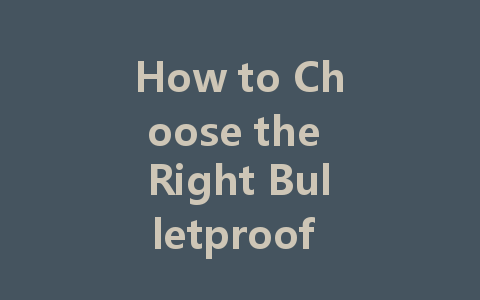In today’s world, personal safety has become a top priority for many. Whether it’s for law enforcement, military personnel, or civilians seeking extra protection, the demand for effective bulletproof fabrics is on the rise. In this guide, we will explore the various types of bulletproof fabrics, key considerations for selecting the right one, and how to ensure that you get the best value for your needs.
Compreender os tecidos à prova de bala
What Are Bulletproof Fabrics?
Bulletproof fabrics are specially designed materials that provide ballistic protection, typically used in vests, clothing, and various protective gear. These fabrics are made from advanced materials such as Kevlar, Twaron, and more recently, newer composites that combine different fibers for enhanced protection. The primary purpose of bulletproof fabrics is to absorb and dissipate the energy from projectiles to reduce the risk of injury.
How Do Bulletproof Fabrics Work?
The effectiveness of bulletproof fabrics stems from their unique structural composition. The tightly woven fibers create a network that can trap and disperse the energy of a bullet upon impact, preventing it from penetrating through to the body. While no tecido can guarantee 100% protection, high-quality bulletproof materials significantly reduce the risk of severe injuries or fatalities from firearm-related incidents.
Key Considerations When Choosing Bulletproof Fabric
Level of Protection
When selecting bulletproof fabric, one of the most critical factors to consider is the level of protection it offers. Bulletproof materials are rated according to the National Institute of Justice (NIJ) standards, which categorize body armor into various levels based on the type of ammunition it can withstand. Understanding these levels can help you determine which fabric is best suited for your needs.
For example, NIJ Level IIA can protect against lower-caliber rounds, while Level IIIA covers higher-caliber threats. It’s essential to assess your specific environment and exposure risk to make an informed decision.
Weight and Comfort
Another key factor in selecting bulletproof fabric is weight and comfort. Heavier armor may provide higher levels of protection, but it can also be cumbersome to wear for extended periods. Modern innovations in bulletproof fabric technology have led to the development of lighter materials that still offer superior protection.
Look for fabrics that balance protection and comfort, ensuring that they fit snugly and allow for a full range of motion. It’s also advisable to try on various styles and designs to find options that are both protective and comfortable for your daily wear.
Durability and Maintenance
Durability is crucial when choosing bulletproof fabrics. Your armor should withstand the rigors of regular use, whether in a tactical environment or everyday situations. Consider materials that are resistant to abrasions, tears, and environmental factors.
Additionally, maintenance is essential to ensure the longevity of your bulletproof fabric. Some materials require special care, while others are machine washable. Be sure to read care instructions and choose fabrics that fit your lifestyle and maintenance preferences.
Applications of Bulletproof Fabric
Military and Law Enforcement Use
Bulletproof fabrics have been a staple in military and law enforcement gear for decades. These professionals require reliable protection against firearms and other types of threats in high-risk environments. Bulletproof vests and tactical clothing designed with advanced fabrics provide the necessary protection while allowing for mobility and versatility.
Civilian Applications
The use of bulletproof fabrics is not limited to military and law enforcement. Civilians are increasingly seeking protective clothing as concerns about personal safety continue to rise. Bulletproof clothing, backpacks, and accessories designed for everyday use provide a discreet option for individuals who want added security in unpredictable situations.
Fashion and Lifestyle Integration
Recent innovations have allowed bulletproof fabrics to enter the fashion industry. Designers now incorporate these materials into stylish outerwear and everyday clothing, enabling consumers to prioritize safety without sacrificing aesthetics. This trend has made protective clothing more accessible and appealing to a broader audience.
Conclusão
Choosing the right bulletproof fabric requires careful consideration of various factors such as level of protection, weight, comfort, durability, and intended use. By understanding these aspects, you can make an informed decision that enhances your safety while meeting your individual needs. As bulletproof technology continues to evolve, consumers can look forward to more innovative and stylish options for personal protection. Always prioritize safety, and remember that the right choice can make all the difference in critical situations.

